5 Types of Cabbage You’ll Find at the Grocery Store—and the Best Ways to Use Them
Super-healthy and versatile, this multi-faceted vegetable can be prepared and enjoyed in many different ways.
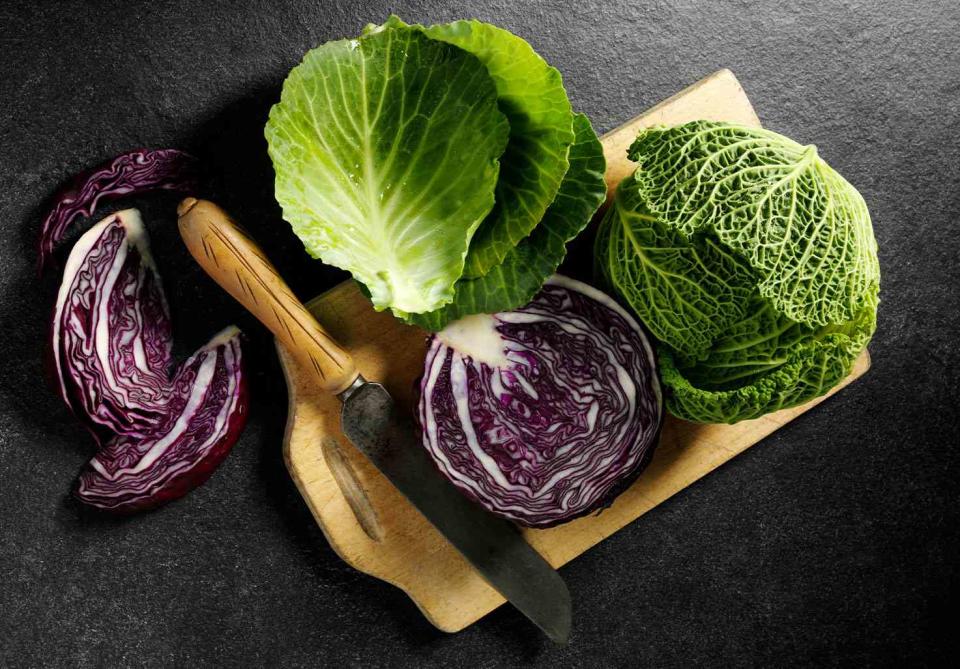
MonicaNinker / Getty Images
It may seem odd to tout cabbage as a trendy vegetable but here's the thing: most types of cabbage are more extraordinary than ordinary. In fact, its wonders have been hiding in plain sight all along. Just as cauliflower, once pushed to the periphery for its mushy past, has been recast as an oven-roasted crowd-pleaser, cabbage is also getting its due, thanks to its versatility and health benefits. (That sulfurous odor, which gave it a bad rep way back when, only happens when it's overcooked.) Here's the lowdown on cabbage, including the best ways to prepare and enjoy every bite.
Meet Our Expert
Riley Davies, produce category manager for online grocer, Misfits Market
Charis Neves, director of innovation and product management, Taylor Farms
Related: A Guide to Every Type of Broccoli, From Broccoli Rabe to Broccolini—Plus, How to Use Each One
What Is Cabbage?
Part of the Brassica oleracea family, cabbage, in its many forms (including broccoli, kale, Brussels sprouts, and kohlrabi), has been cultivated from wild cabbage in Europe since the Middle Ages. The entire cabbage gang, which includes head cabbages, napa, Savoy, and bok choy, falls under other categories, too. "They're also classified as cole crops, or cruciferous vegetables, and are cultivated relatives of the wild mustard plant," says Riley Davies, produce category manager, Misfits Market.
High in vitamins C and K, fiber, and antioxidants, with anti-inflammatory properties, cabbage reaches that high bar of being a superfood.
Head Cabbages
The cabbages most of us are familiar with—red, green, and savoy—are head cabbages of the varietal Capitata, Latin for 'headed,' They are pointed or round, with multiple layers of wrapped leaves, a thick core, and a waxy coating.
Related: How to Cut Cabbage Into Slices, Shreds, Chunks, and Wedges
Red Cabbage
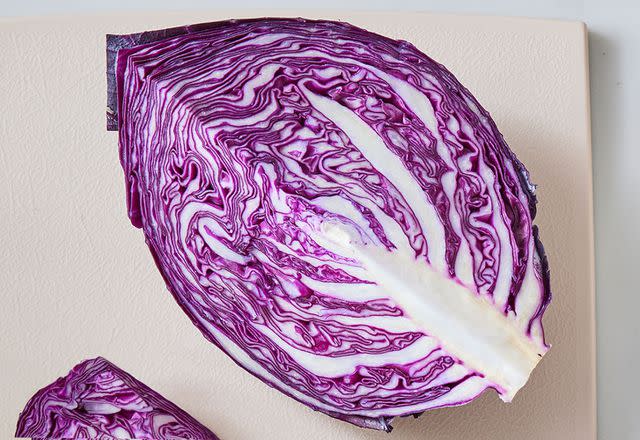
MSL-1118954-Simple-Coleslaw-ingredients-1039.jpg
Ranging from red to purple, this head cabbage has a stronger flavor than green and can be eaten cooked or raw, adding texture and snap to dishes. "Crunch is a big benefit of cabbage, especially when diced; even shredded, it has great crunch," says Charis Neves, director of innovation and product management for Taylor Farms, which grows, sources, chops, and supplies red, green, Savoy, and napa cabbage.
Best Uses: "Raw, it is great for coleslaw and salads—hearty enough to be dressed ahead of serving. Cooked, it is a traditional element of German cooking, commonly braised or roasted," says Davies.
Recipes and Serving Suggestions: In coleslaw, it adds beautiful color, and in salads, it complements more mild greens like Romaine and iceberg lettuces, says Neves. Try it in Shredded Cabbage Slaw with Ginger Vinaigrette, Braised Pork with Cabbage and Apples, or simply sauteed.
Cooking Tips: Red cabbage can lose some of its brilliance when cooked unless you take measures like adding an acidic agent. "You can add a splash of apple cider vinegar or opt to use an ice bath as soon as the vegetables are done cooking before adding any finishing sauces," says Neves.
Green Cabbage
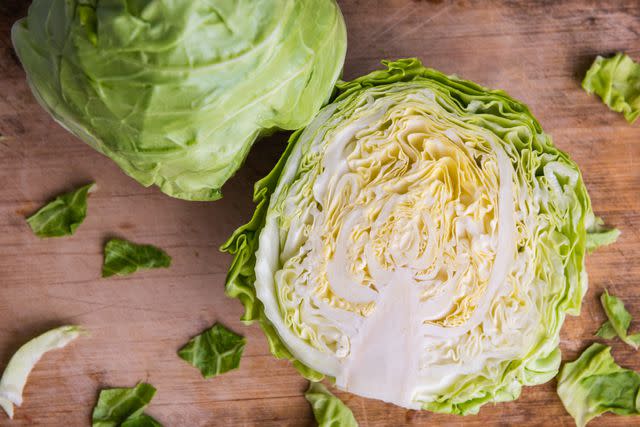
HUIZENG HU / Getty Images
A common variety, green cabbage has densely packed green leaves that grow lighter towards the center.
Best Uses: Though not as robust as red cabbage, it's equally adaptable, and can be consumed raw, or cooked, says Davies. “Eaten most commonly in Eastern European cuisine, green cabbage can be sautéed, braised, roasted, added to soups and stews, and steamed," she says.
Recipes and Serving Suggestions: "Green cabbage is excellent diced in chopped salads, shredded as a topper for fish tacos, and as a complement to shredded carrots in a classic coleslaw," says Neves. Added to stews, or soups like Classic Minestrone and Kapusniak (Polish Cabbage-and-Bacon Soup), it becomes tender, with a subtle sweetness.
Cooking Tips: Another way to enjoy its texture and flavor, says Neves, is to quarter the cabbage, brush the hunks with cooking oil, sprinkle on salt and pepper, and grill for 8-10 minutes per side.
Savoy Cabbage
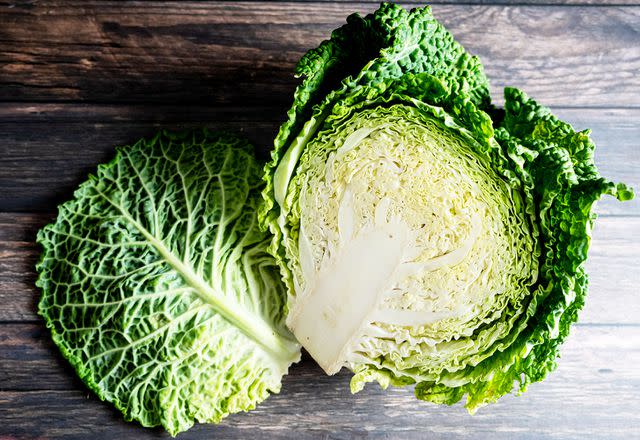
UsTwoproject / Getty Images
With its loose layers of frilly leaves, this thick-ribbed head cabbage, also called curly cabbage, stands apart from its tightly packed relations.
Best Uses: Sliced raw into salads, it has a slightly peppery flavor. Stir-fried, stuffed, or braised, its mild, sweet undertones take center stage.
Recipes and Serving Suggestions: Savoy cabbage's nutty flavor pairs well with bacon, and lends itself to two updated old chestnuts, Stuffed Cabbage, and Slow-Cooker Corned Beef and Cabbage. When braised, its delicate leaves turn buttery; roasted, its edges become caramelized.
Cooking Tips: Remove the thick ribs from the outer leaves, then core the cabbage before cooking.
Napa Cabbage
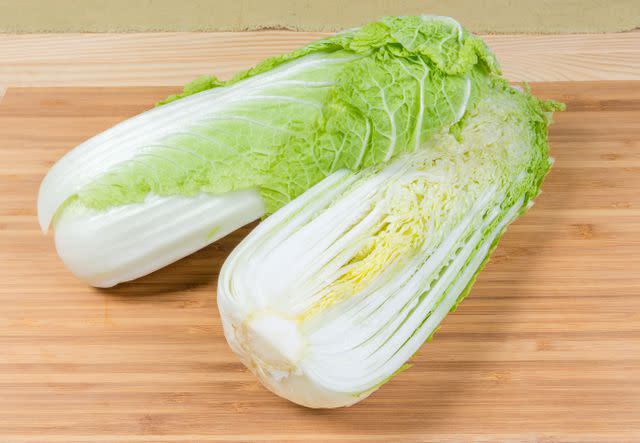
anmbph / Getty Images
Oblong, with wrinkled leaves and a mild flavor, napa cabbage is an outlier. “While not technically a cabbage (Brassica oleracea) like traditional cabbage, napa cabbage (Brassica rapa, also known as Chinese cabbage or white cabbage) is more closely related to bok choy," says Davies.
Best Uses: Frequently fermented, napa cabbage, says Davies, can also be used raw in salads and wraps, cooked in soup, or simply steamed.
Recipes and Serving Suggestions: Try it pickled, for a refreshing take on sauerkraut, in this Chicken, Edamame, and Noodle Stir-Fry (Napa cabbage complements many Asian dishes, notes Neves) or with gochujang for a traditional Korean kimchi.
Cooking Tips: Remove the outer leaves before cooking, and tear off each leaf for recipes.
Bok Choy
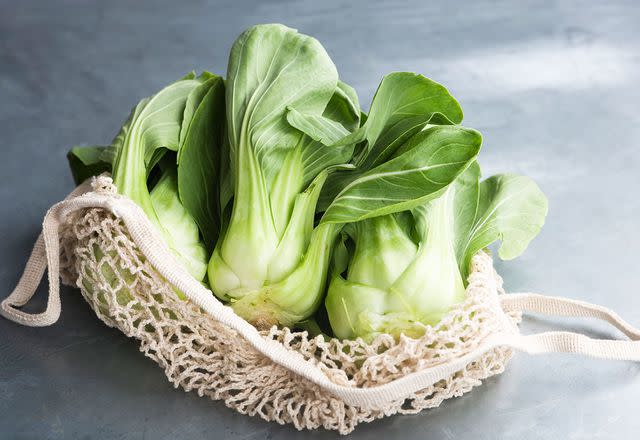
PhotoAlto/Laurence Mouton / Getty Images
Bok choy is another type of Chinese cabbage in the mustard family (Brassicaceae), Sometimes called pak choi, this Asian vegetable has a white stem that branches into dark green leaves. Baby bok choy, a milder variation harvested earlier, looks like bok choy in miniature.
Best Uses: Bok choy is the star of stir-fries and soups, but it can also be shredded into slaw, steamed, sautéed, or braised. "The beauty of the Brassica family is its versatility, in addition to its nutritional benefits," says Davies.
Recipes and Serving Suggestions: Try bok choy in Broken Wonton Soup, Chicken Fried Rice With Bok Choy, and Baby Bok Choy Slaw.
Cooking Tips: Baby bok choy can be cooked whole. For full-size bok choy, separate the leaves before cooking.
Read the original article on Martha Stewart.

